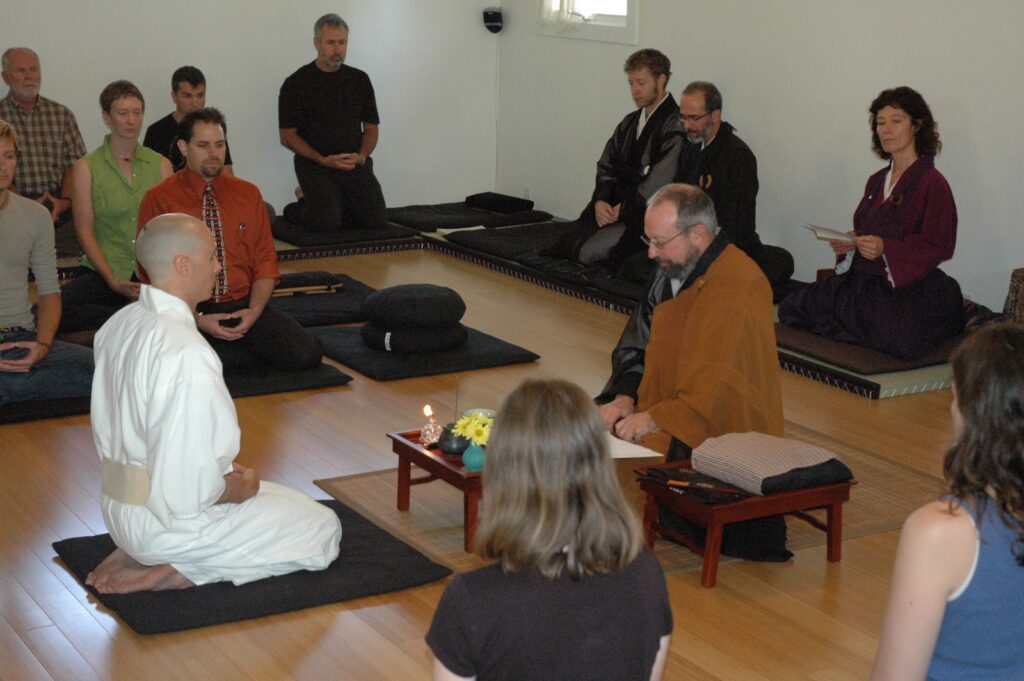The Zen Path Of The Monastic

Some Zen practitioners may be called internally to commit to the monastic life. Monastic is a gender-inclusive term that has commonly replaced the words monk and nun, though these gender binary terms are still in use in many Buddhist communities. In Japan, most priests started out as monastics living in a monastery and then took one of three different routes: they remained monastics and lived in the monastery; they remained monastics and served as priests in community temples; or they married and continued their priesthood in community temples without living as a monastic. In the broader Buddhism, there are Chinese Ch’an, Southeast Asian Theravadin, and Tibetan/Nepali paths of monasticism that differ quite dramatically from the Japanese monastic path, yet have influenced American Zen monasticism.
In the West, we have also had the Christian orthodox traditions as our monastic model and influence, so the American monastic seedling has become an amalgam of Catholic, Buddhist, and Zen formats. Because Buddhism is so new in the West, many monasteries and Zen centers lack funding for full-time monastics and therefore those called to monastic life must work seasonally, part-time, or full-time to pay their own way, or to pay school loans or other debt. As a result, American Zen monasticism can look a lot of different ways.
The intention behind monasticism is to completely devote one’s life to the mystical practices of meditation in order to deepen one’s momentary connection to the unnameable, or better put, to dissolve into it. Monastics are typically drawn toward silence, simplicity, chastity, and introspection. Distracting activities are minimized and devotion is maximized. A person may be a monastic for a period of time in their life and then decide to continue as a priest who may engage in romantic relationships and develop a more complicated lifestyle, or they may completely return to lay life. Some monastics may leave the monastery or abbey and live alone as a monk in the world.
Some residential American Zen centers use the term monastic to apply to anyone living in the monastery, even if married or being romantically involved, while other Zen monasteries are very strict about traditional monastic vows. Maitreya Abbey is not a traditionally cloistered monastery and our residents are not monastics in the traditional sense. We are a one foot in (service-oriented), one foot out community (contemplatives). Our individual residents may or may not identify as monastics; they have jobs and pay their own way, yet they are very committed to the principles of monasticism.
In American Zen, there is usually no distinction between monastic and priest ordination or training, just in lifestyle. To become a monastic, follow the same procedures as priest ordination. See the RESOURCES page for suggested readings.